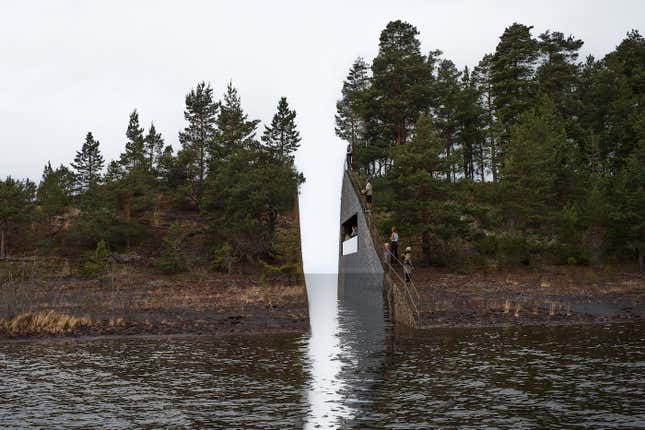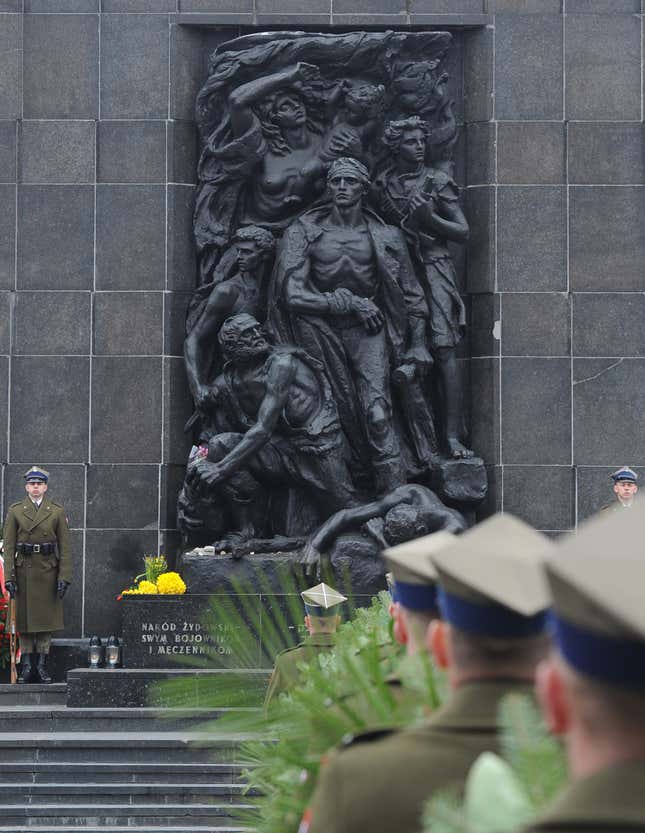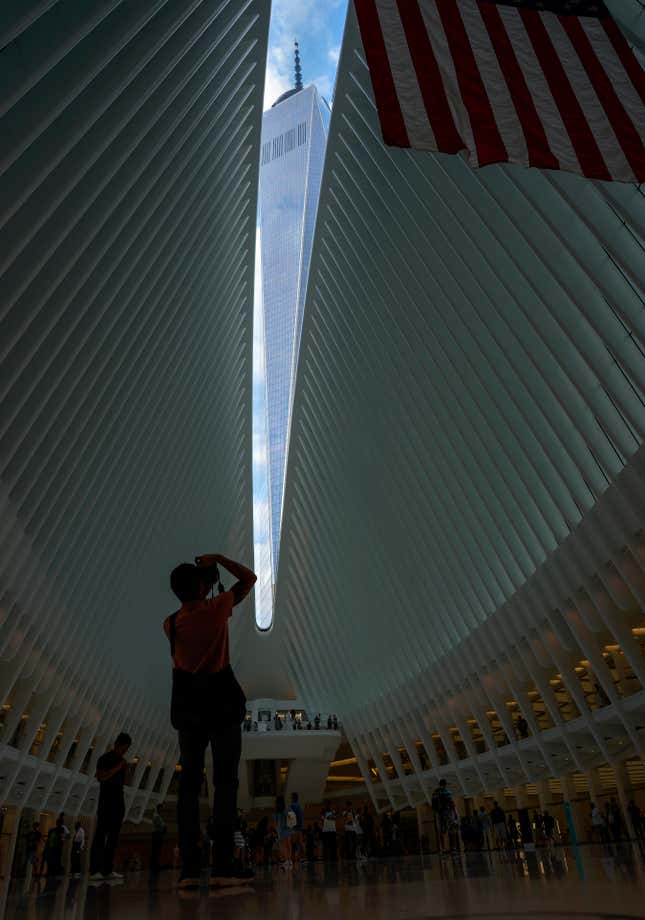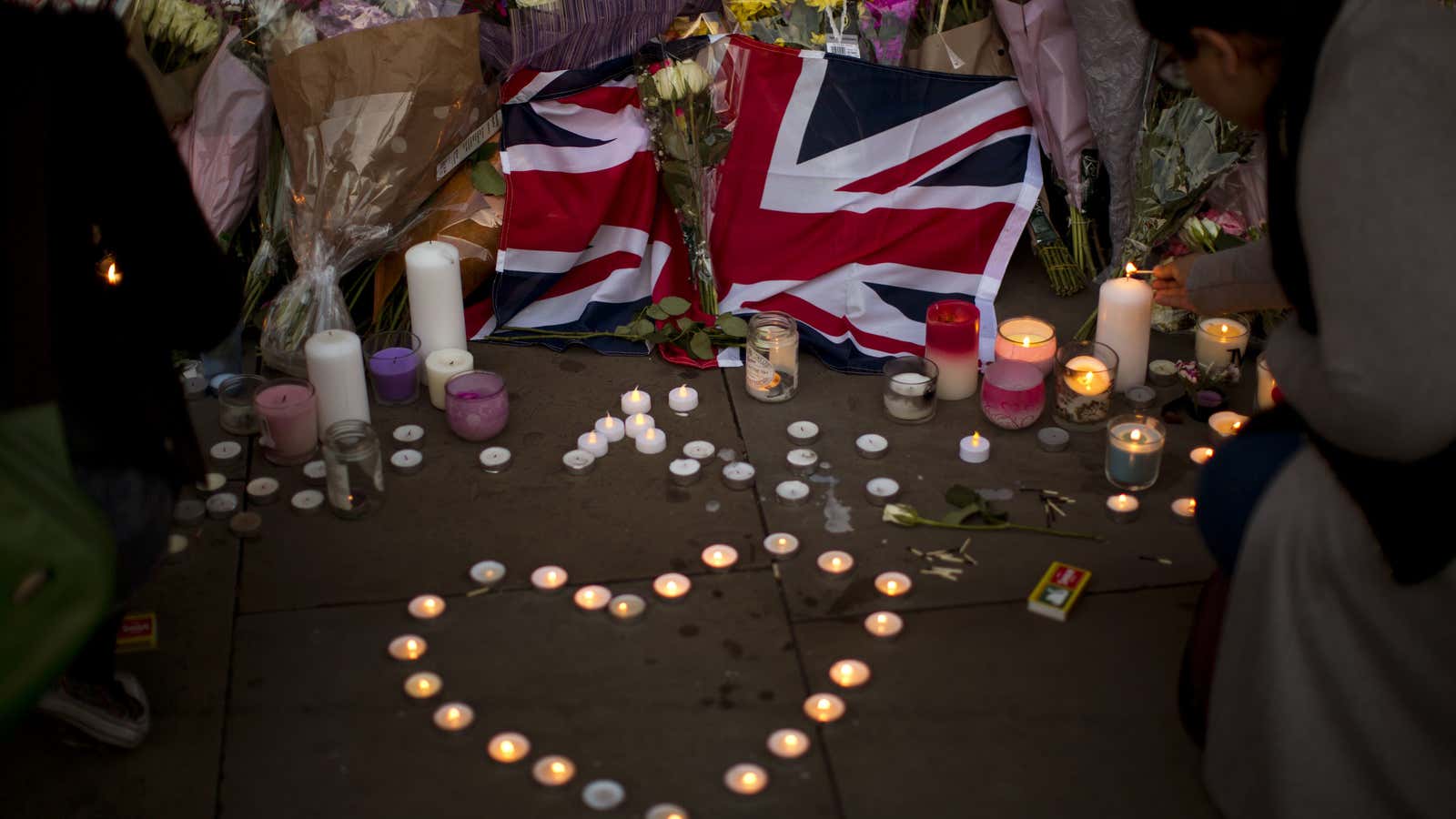In 2011, on an overcast day on the Norwegian island of Utøya, far-right terrorist Anders Behring Breivik opened fire on a summer camp, killing 69 children and counselors. Ambitious, young, left-of-center Norwegians had flocked to Utøya for years to play sunlit games of volleyball and have fireside political discussions as part of Norway’s Labour Party Youth League summer camp. The massacre marked the deadliest attack in Norway since World War II.
In the aftermath, Norwegians wondered how they would ever begin to heal the profound wounds inflicted on the country—and on Utøya itself.

Swedish artist Jonas Dahlberg came up with a radical idea to pay public respect to the victims through design. He proposed “Memory Wound,” a memorial to the victims in the form of a 3.5-meter-wide (11.5 ft) slit in the Sørbråten peninsula, which faces Utøya. The monument would mark “a symbolic wound in the landscape” to safeguard the memory of the horrors that transpired there.
Dahlberg’s concept is a powerful example of the ways artists and designers, in collaboration with communities and stakeholders, attempt to address the trauma associated with “wounded places”: the myriad of landscapes, buildings, and cities that have been sites of conflict and pain. Wounded places like Utøya can be found around the globe as the result of political and armed conflicts, natural disasters, and other acts of violence. They can be far afield in places such as war-torn Syria or close to home, such as at the sites of former Japanese internment camps in California.

As access to information continues to expand, we are increasingly aware that we are living in—and with—the scars of history and memory. They are ever-present and inescapable, which raises a question that is both metaphorical and practical: How can we be at home in places marked by destruction?
Wounded places, healed
When working on the ground with people affected by trauma, designers can issue powerful responses.
Sometimes art can not only change a space but also confer dignity where it didn’t exist before. For example, by working with faculty and students from the National Autonomous University of Mexico, the inmates at the Santa Martha de Acatitla women’s prison on the outskirts of Mexico City transformed the spaces of their confinement with colorful graphic murals to express their hopes and dreams. The walls, which had literally limited the women’s horizons, opened up psychological spaces of freedom and helped restore a sense of possibility beyond the prison walls.
Other times, it’s about revealing and humanizing the sites of rupture and displacement. Take designers Liam Healy and Jimmy Loizeau, for example, who connected cameras to the wheels of bicycles and rode them through the Jungle of Calais, a refugee and migrant encampment in France. Their unauthorized footage shows a city lively with makeshift barbershops, hairdressers, food stands, and small businesses that in other circumstances might be celebrated as enterprising pop-ups. The camp has since been emptied of people and razed, but Healy and Loizeau’s footage lives on as a visual record of the ingenuity of its former inhabitants, who became informal city planners under extreme duress.
Remembering through design
Over time, years after the dust finally settles in places beset by disaster and conflict, different battles emerge. The politics of memory and forgetting come to the fore—and it is quite literally a matter of politics, because choosing what to restore and what to erase is always a matter of power.
Left to governmental institutions, commemorations can become propaganda. Left to survivors representing rival factions with competing views of history, they may never get off the ground. It is enormously difficult to decide how to rebuild and honor divergent memories in places marked by layers of turmoil, both visible and invisible.
One of the most significant historical examples of this challenge exists in the city Warsaw, Poland. Decades after World War II, which led to the decimation of 80% of the city’s buildings, there are wounds that have yet to be healed—or even be properly dressed. As Elżbieta Janicka, a photographer and professor of Slavic Studies, points out, a decidedly over-wrought memorial that commemorates non-Jewish victimhood within the bounds of the former Jewish Warsaw ghetto is nothing less than denial through misdirection.

In modern times, this challenge is illustrated by the fractious and protracted development of the Freedom Tower’s main structures and the accompanying memorial on the site of the former World Trade Center in New York. As Martin Filler argues, “The transformation of the World Trade Center site was hampered to a shameful degree by the intransigent self-interest of both individuals and institutions,” including real-estate moguls, city agencies, crusading journalists, and even the families of the victims.

More and more designers are using their practice for social good. But working in hostile places—occupied territories, resource-depleted lands, war zones, and the refugee encampments they spawn—demands far more than good intentions. In fraught situations, consensus on design interventions is often difficult to achieve. In Utøya, Dahlberg’s proposal was ultimately rejected by the island’s inhabitants, who alternately described it as a “rape of nature,” a “tourist attraction,” and a “hideous monument,” according to a report in Dezeen. Such reactions typify the challenges posed by wounded places wherever they exist.
When the time comes to honor sites felled by recent conflicts—from Brussels to the Bataclan Theatre, and from Crimea to the Northeastern Nigeria—designers will face questions about how and where death and loss should be remembered. In situations like these, designers—whether professionals or ordinary people—can choose to either conceal politically undesirable histories or make them visible.
At its best, design is a shared act of listening and building; designers and activists should therefore be allies, not evangelists, in their work.
